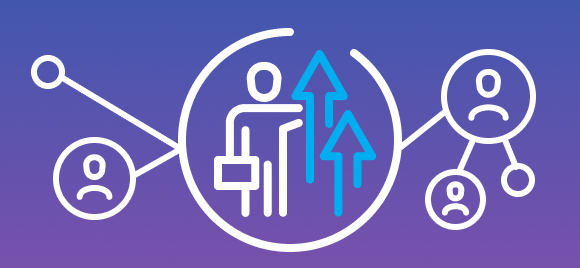Even in the most stable of economic conditions, managing a business means staring down an endless list of hurdles. But when you layer on economic unpredictability and ever-changing marketing fluctuations, these challenges grow exponentially. Rapid-fire budget adjustments. Scrapped initiatives. Surging headlong toward unfamiliar market opportunities. All of this can challenge and frustrate even the most seasoned business leaders.
It’s during these unpredictable times that the role of the contingent workforce becomes more crucial than ever. The flexibility and cost-effectiveness of contingent labor are invaluable assets for companies navigating the dynamic waters of an ever-changing economy.
In this article, we explore why embracing contingent workers can be advantageous for businesses as they adjust to changing market conditions.
Understanding Contingent Workers
First, let’s define who contingent workers are. They refer to professionals who are not permanently employed by a company but are engaged on a temporary or project basis. This category includes freelancers, independent contractors, SOW consultants, and temporary workers sourced through staffing agencies. Even consulting companies you bring in to complete important projects are part of your contingent workforce.
While these workers vary greatly – from fill-in office temps to contracted CEOs – they all have one thing in common: they’re not bound by traditional, long-term employment contracts. This gives the businesses that use them a high degree of flexibility.
Flexibility in Workforce Management
In an ever-changing economy, where market demands are unpredictable and financial stability is fluid, flexibility is absolutely essential. Businesses simply can’t afford to waste a moment as they react to changes in the world around them. Agility is everything.
Hiring contingent workers allows businesses to adjust their workforce based on current needs without the long-term commitment and costs associated with full-time employees. This agility enables companies to respond swiftly to market changes, a vital survival skill in a volatile economic landscape.
Cost-Effectiveness
This is not news to anyone, but cost reduction is paramount during economic downturns. Contingent workers can be a more cost-effective solution for businesses. Companies can avoid the ongoing expenses of full-time salaries and benefits by typically hiring contingent workers for specific projects or a set duration. This can represent a significant savings, especially when revenues are falling.
And while businesses spend more freely during economic upswings, the ferocity of competition compels business leaders to continue to manage costs even as they scale up. Once again, the effective use of contingent labor can be a critical differentiator. In addition to the general cost-effectiveness of contingent labor introduced above, businesses can now stretch their budgets to pursue initiatives with higher-value talent – and many top performers in virtually every industry have embraced the independent work style.
Access to Specialized Skills
Economic changes often force companies to innovate and adapt. This sometimes requires skills that their current workforce may not possess. With their diverse backgrounds and specialized skill sets, contingent workers can fill these gaps efficiently. They bring fresh perspectives and expertise that can be crucial for businesses looking to pivot or innovate in response to economic challenges.
Reducing Risk
Hiring permanent employees in a fluctuating economic environment can be risky. If the market situation worsens, companies may face hard decisions, including layoffs, which can be costly and harm the company’s reputation.
While increasing reliance on contingent workers carries risk of its own (which can be addressed by a capable compliance and engagement partner), it mitigates the risk of being locked into dozens or hundreds of full-time workers you can no longer afford. In most cases, this is a favorable counterbalance.
As such, businesses can leverage contingent labor to scale their workforce up or down as needed without the legal and emotional complications of hiring or laying off full-time staff.
Keeping Up with Competitors
Staying competitive can be a maze in even the best economic conditions, and it’s even more challenging when faced with economic uncertainty. Companies that adapt quickly and manage their resources efficiently are more likely to survive and thrive. Once again, contingent workers enable businesses to maintain operational efficiency and innovation without overburdening their budgets.
Contingent Workforce Challenges
While contingent workers offer many benefits, there are challenges too. Managing a mixed workforce of permanent and contingent staff requires effective communication, integration strategies, nimble management, and effective risk mitigation.
And don’t forget motivation. Just like with full-timers, just getting a paycheck isn’t always enough to keep contingent workers operating at their peak. If you’re looking for ways to keep your contingent workforce as driven and committed as their full-time counterparts, here are some strategies.
The Future of Work
The rise of the gig economy indicates a broader shift in the world of work. Each year, more and more professionals are choosing contingent work for its flexibility and variety, and businesses are increasingly recognizing the value of this labor model. In an ever-changing economy, this trend becomes even more pronounced, as businesses seek efficiency and agility while professionals seek diverse opportunities and work-life balance.
Conclusion
The role of the contingent worker is increasingly vital in an ever-changing economy. Their flexibility, cost-effectiveness, and specialized skills make them an essential resource for businesses striving to navigate economic changes, whether good or bad. As the nature of work continues to evolve, contingent labor will surely play an even more significant role in the business strategies of companies across the U.S.
Embracing this model not only helps businesses survive difficult times but can also position them for success when economic conditions stabilize. The key is to balance the immediate benefits of contingent labor with long-term workforce planning, ensuring that businesses remain agile, resilient, and competitive, no matter what economic challenges lie ahead.

